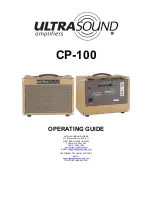
Operating Manual OXI-dive
TM
1
Page 12 of 19
a) Using the Closed Circuit to ventilate a non-breathing casualty:
NOTE:
Unless an operator is skilled, ventilating a non-breathing casualty may
require two operators - one to maintain the airway and mask seal, and the other to
compress the breathing bag.
1. If practicable turn an unconscious, breathing patient into the left lateral position.
Take special care if a spinal injury is suspected.
2. Ensure the mask is positioned correctly and that a good mask seal is obtained.
3. Gently close the APL exhaust valve (clockwise). DO NOT USE FORCE
4. Set the flow rate to 8 L/min. Depress the Oxygen Flush to rapidly fill the
breathing bag.
5. Ventilate the casualty by rhythmically compressing the breathing bag at an
appropriate rate, until the lower chest and abdomen starts to rise.
6. After 5 minutes, reduce the flow rate to 2 L/min as long as the breathing bag
remains adequately inflated. The flow rate is increased or decreased as necessary
to compensate for leaks or to avoid over inflating the bag. Intermittently open the
APL exhaust valve if the breathing bag overfills. For a diver with suspected
decompression illness, flush the system every 10-15 minutes by emptying the bag
and then refill by depressing the Oxygen Flush.
7. For a casualty who has inhaled a toxic gas, set the flow rate to 8 L/min to assist
in the excretion of the toxic gas from the lungs. Empty the breathing bag
intermittently to flush the toxic gas from the breathing circuit. A tube can be
attached to the 30 mm scavenging port to direct toxic gas away from the operator.
8. Tilt the casualty's head back and support the jaw to achieve an airway.
9. It is usually more effective for the rescuer to be positioned behind the casualty's
head and to open the airway using the jaw thrust/chin lift technique.
10. Carefully monitor the casualty's pulse, colour, and general condition.
11. Monitor the oxygen supply and be prepared to revert to expired air resuscitation if
the oxygen supply becomes exhausted.
b) Using the CPR-PRO Resuscitation Mask to ventilate a non-breathing casualty:
If an operator is having difficulty adequately ventilating a non-breathing
c
asualty
using the closed circuit, the CPR-PRO resuscitation mask can be used to provide
mouth-to-mask ventilation with supplemental oxygen. This mask incorporates an
oxygen port and head strap.
1. If practicable turn the patient into the left lateral position. Take special care if a
spinal injury is suspected.
2. Ensure the green oxygen tubing is firmly attached to the CPR-PRO and to the flow
outlet on the KDK85 Autovalve. Set the flow rate to 8 L/min. (Alternatively use
the 8 L/min nipple restrictor assembly).
3. Position the CPR-PRO resuscitation mask over the mouth and nose, with the
narrow end over the nose, ensuring the best seal possible.
4. With the operator positioned behind the patient’s head, support the jaw and tilt
the head back firmly. If necessary open the airway using jaw thrust.
5. Using a ‘mouth to mask’ technique, ventilate the patient at an appropriate
rate.
6. When spontaneous breathing returns keep the CPR-PRO resuscitation
mask in position or change to the non-rebreathing therapy mask and reservoir bag.
7. Continue to monitor the casualty's condition.





































